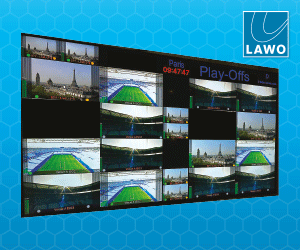For his latest film The Hobbit–An Unexpected Journey, Jackson is being very avant-garde. When currently films are shot in 24 frames per second and have been since the 1920s, Jackson is shooting in 48 frames per second. The film is expected to run into three parts with sequels expected annually in December 2013 and 2014. […]

For his latest film The Hobbit–An Unexpected Journey, Jackson is being very avant-garde. When currently films are shot in 24 frames per second and have been since the 1920s, Jackson is shooting in 48 frames per second.
The film is expected to run into three parts with sequels expected annually in December 2013 and 2014. The first installment, The Hobbit–An Unexpected Journey, will release today Thursday December 13 in the UAE.
His previous films, The Lord of the Rings trilogy is among the 30 highest-grossing movies in all times and is based on JRR Tolkiens three-part novel. Now nearly ten years later, Director Peter Jackson has turned his attention to that books predecessor, The Hobbit, a childrens novel containing the same characters with a similar plot and scenarios.
“The Hobbit” is the first major studio movie to play at 48 frames per second and is creating a worldwide buzz in the film industry. With the advent of 3D, the slower frame rate poses to be a problem as images appear to strain the eye. In his blog the director mentioned that 48fps is “more lifelike and much easier to watch the image has hugely enhanced clarity and smoothness.”
But the reviews of the “high frame rate” version of The Hobbit have been mixed. Some critics praise the sharper quality while others say it looks like a high-definition television show and makes some props and sets look fake.
In response, Jackson has likened it to the “moment when vinyl records were supplanted by digital CDs”.
Like it or hate it, higher frame rates do seem to be the way forward. Shortly, Jackson and director James Cameron have plans to release upcoming “Avatar” sequels at 60 frames a second.
They contend that seeing more images each second is more natural because it’s closer to what the human eye actually sees, giving a sharper, more lifelike picture and reducing eyestrain for 3-D movies.
With regards to The Hobbit fans are in for another treat. The much loved character from the film Gollum has got a makeover. He is a much more sophisticated performer now than he was 10 years ago.
Gollum certainly benefits from a much more intricate muscle system, Jackson said.
Obviously with a CGI character youre building a character in much the same way as a real creature is built. You build the bones, the skeletons, the muscles. You put layers of fat on. You put a layer of skin on which has to have a translucency depending on what the character is.
Weve deliberately made him look the same. I really wanted The Hobbit to very much have a consistency with the first three movies, he concluded.














































































